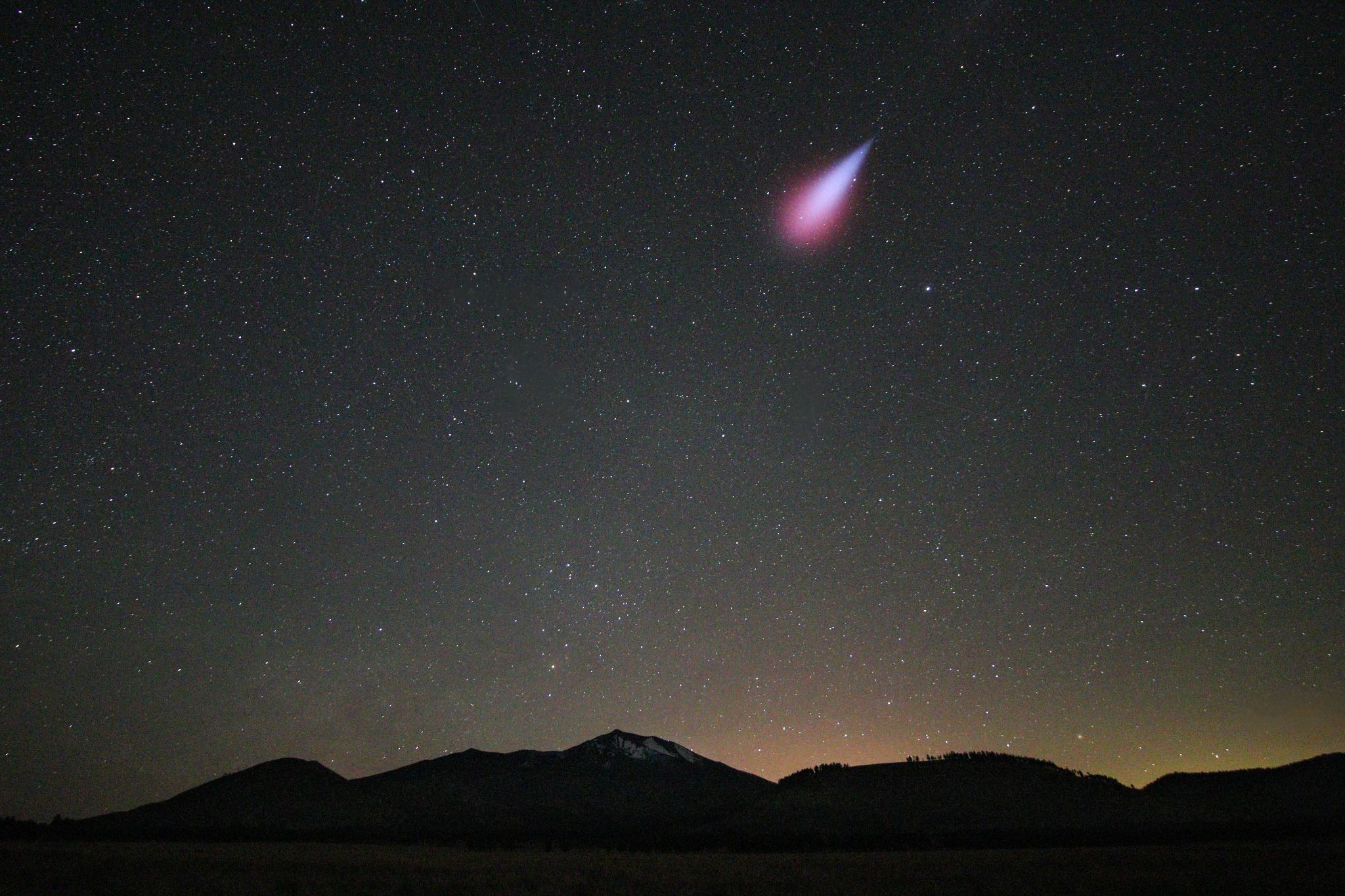By Laura Hasenyager | 2024-06-02

SPACEX AURORA
On 05/31/2024 09:12 pm by Caroline Haldeman| Flagstaff, AZ, USA
While doing a night timelapse in Flagstaff, AZ, I captured a "SpaceX Aurora"
The video is spectacular, you can watch it here on my FB page: https://fb.watch/svxb9Ke1ZZ/
This is a result of an atmospheric hole that was ripped open by the Falcon 9's rockets falling back to Earth.
This is an aurora-like phenomenon that was triggered by a hole in the ionosphere — the upper part of the atmosphere between 50 and 370 miles (80 and 600 kilometers) above the Earth's surface where gases are turned into plasma by solar radiation. But this hole was not a natural occurrence. Instead, it was created by one of SpaceX's Falcon 9 rockets falling back to Earth
This confirmation has come from the Senior Research Scientist at the Center for Space Physics at Boston University. He has been studying this phenomenon for more than 40 years!
See Below...
"Hi Caroline,
That was indeed a de-orbit burn from a Falcon-9 2nd stage. The rocket was launched from Cape Canaveral FL ~90 minutes earlier. For a couple of years, these burns happened ~ 5 minutes later over Texas. SpaceX has moved the burns a little earlier so now they occur over Arizona. The rocket is at ~300 km altitude near the peak of the ionosphere. After the bright white/green glow (the hot exhaust), then there is a red glow showing the oxygen atoms that have been re-combined due to the H2O and CO2 in the exhaust gasses. These atoms are excited to glow at 6300A through chemistry.
We also saw this event from our all-sky camera at the McDonald Observatory near Ft Davis TX. It was near the NW horizon for us."
Jeff Baumgardner
Senior Research Scientist
Center for Space Physics
Boston University
Canon T7i, 10mm f/2.8 lens, tripod, remote shutter
LR
